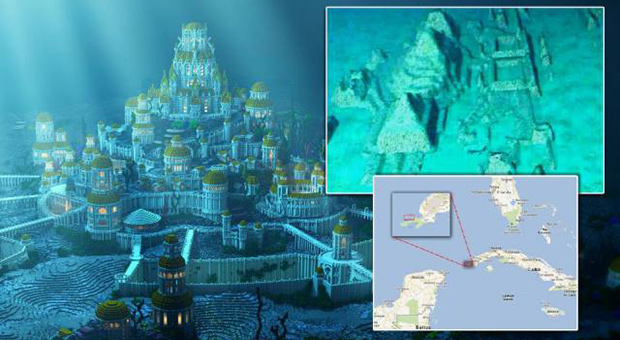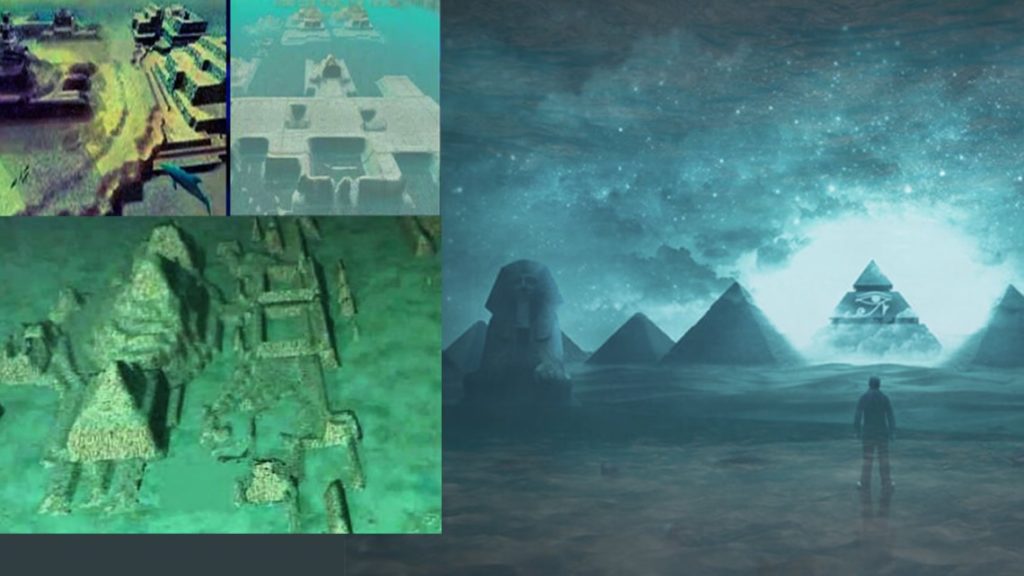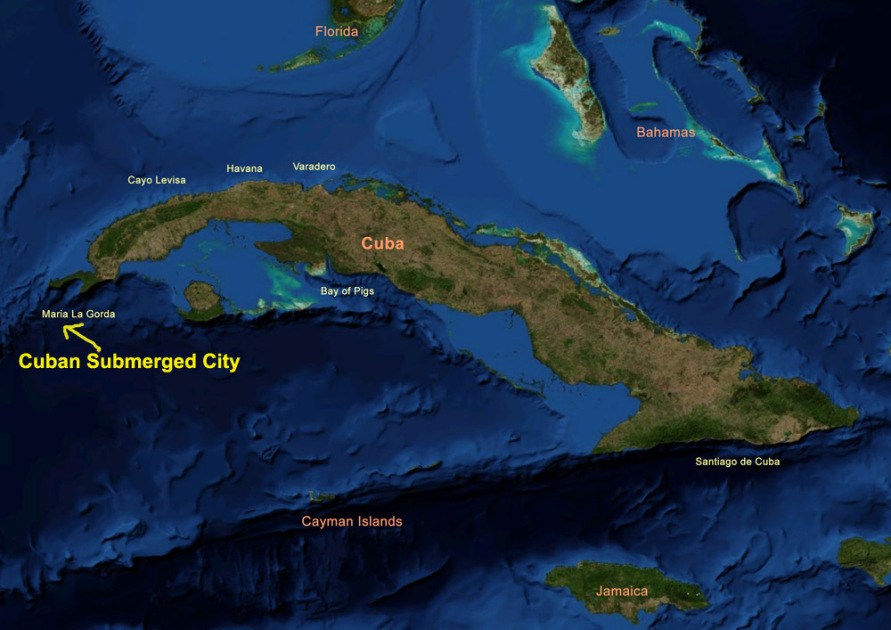 A SUBMERGED CITY NEAR PINAR DEL RIO COASTS?.
A SUBMERGED CITY NEAR PINAR DEL RIO COASTS?.
To the northwest of Cabo de San Antonio, at the westernmost tip of Cuba, a submarine depression with approximately 700 meters depth, is the subject of legends and scientific research. MEGA or the submerged city attracts attention from even the most incredulous.
When the studies were carried out at the beginning of the 21st century, the possibility was assessed that this “city” under the waters was more than six thousand years old. According to the experts, structures with ridge-shaped, elongated aspects and cubic, parallelepiped and pyramidal blocks stand out on the seabed.
According to an article published in this article, the researcher Manuel A. Iturralde Vinent, “the investigations in the MEGA area were carried out for several years, and included the taking of underwater images of video, samples of sediments from the bottom, mosaics of lines of sonar of lateral sweep, maps of location of lines and structures, photos of structures and objects observed, aerial photos, several detailed bathymetric maps, topographic maps and scientific literature on the western region of Cuba. In these works, a group of technicians and navigators participated in the research vessel S.S. Ulises of the Cuban Navy, under the direction of the engineer Paulina Zelitsky. ”
Since then, several hypotheses have been handled: the first considers such structures as the result of natural processes (falling blocks, landslides, landslides …); the second, that were built by intelligent beings because according to Mayan and Yucatecan traditions, there was an island near this area that disappeared due to a catastrophe; and the third hypothesis conjugates the two previous ones when supposing that MEGA is of natural origin and was transformed by human beings.
According to the press published in those days of study, the Canadian oceanographic engineer Paulina Zelitsky offered statements to praise “the wonderful structure” and to express its opinion about what could have been “a great urban center”.
From the discovery of this submerged infrastructure, the legends tell that perhaps the Cuban archipelago was once linked to the Yucatan Peninsula, through a strip of urbanized land of which today only the ruins remain under the sea.
Other versions are closer to the second hypothesis of the scientists who studied the case: it is said that a similar island sank because of a natural cataclysm. Many accompany this story with references similar to that of the famous disappeared city of Atlantis.
The certain thing is that they will have to continue the studies on the matter and meanwhile, the waters of the westernmost end of Cuba preserve this and other legends, almost always related to the magnificence of that marine landscape.
 UNA CIUDAD SUMERGIDA JUNTO A LAS COSTAS PINAREÑAS?.
UNA CIUDAD SUMERGIDA JUNTO A LAS COSTAS PINAREÑAS?.
Al noroeste del Cabo de San Antonio, en el extremo más occidental de Cuba, una depresión submarina con aproximadamente 700 metros de profundidad, es motivo de leyendas e investigaciones científicas. MEGA o la Ciudad sumergida atrae atenciones hasta de los más incrédulos.
Cuando se realizaron los estudios a inicios del siglo XXI, se valoró la posibilidad de que aquella “urbe” bajo las aguas tuviera más de seis mil años de antigüedad. Según los expertos, en el fondo marino sobresalen estructuras con formas de crestas, aspectos alargados y bloques cúbicos, paralelepípedos y piramidales.
Según publicó en un artículo al respecto, el investigador Manuel A. Iturralde Vinent, “las investigaciones en el área de MEGA se realizaron durante varios años, e incluyeron la toma de imágenes submarinas de video, muestras de sedimentos del fondo, mosaicos de líneas de sonar de barrido lateral, mapas de localización de las líneas y de las estructuras, fotos de las estructuras y objetos observados, fotos aéreas, varios mapas batimétricos detallados, mapas topográficos y literatura científica sobre la región occidental de Cuba. En estos trabajos participaron un grupo de técnicos y navegantes en el barco de investigación S.S.Ulises de la marina cubana, bajo la dirección de la ingeniera Paulina Zelitsky”.
Desde entonces se han manejado varias hipótesis: la primera considera tales estructuras como resultado de procesos naturales (caída de bloques, derrumbes, deslizamientos…); la segunda, que fueron construidas por seres inteligentes pues según tradiciones mayas y yucatecas, había una isla cercana a esta zona que desapareció a causa de una catástrofe; y la tercera hipótesis conjuga las dos anteriores al suponer que MEGA es de origen natural y fue transformada por seres humanos.
Según publicó la prensa en aquellos días de estudio, la ingeniera oceanográfica canadiense Paulina Zelitsky ofreció declaraciones para alagar “la estructura maravillosa” y exponer su criterio sobre lo que pudo haber sido “un gran centro urbano”.
A partir del descubrimiento de esta infraestructura sumergida, las leyendas cuentan que quizás el archipiélago cubano estuvo unido alguna vez a la Península de Yucatán, a través de una franja de tierra urbanizada de la que hoy solo quedan las ruinas bajo el mar.
Otras versiones se acercan más a la segunda hipótesis de los científicos que estudiaron el caso: se dice que una isla semejante se hundió a causa de un cataclismo natural. Muchos acompañan esta historia con referencias similares a la de la famosa ciudad desaparecida de la Atlántida.
Lo cierto es que deberán continuar los estudios al respecto y mientras tanto, las aguas del extremo más occidental de Cuba conservan esta y otras leyendas, casi siempre relacionadas con la magnificencia de aquel paisaje marino.
Agencies/Radio Encyclop./ Laura Barrera/ Internet Photos/ Arnoldo Varona/ TheCubanHistory.com
THE CUBAN HISTORY, HOLLYWOOD.






